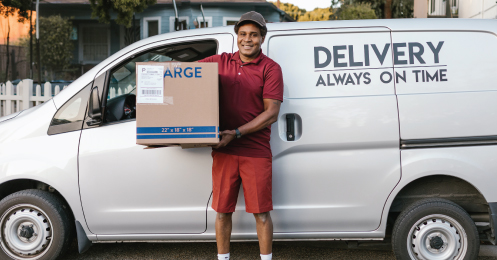The retail furniture and appliance industry presents some unique challenges in comparison with more general retail businesses. The products sold are generally physically large and heavy, requiring delivery to the buyer’s location by professional delivery people. As a consumer, you’re not likely to walk out of a store carrying your new king bed or 5-piece living room suite under your arm, and if you purchase these products online, they’re not going to arrive via common courier. With certain products, the delivery people will also set-up or install the delivered items which will also need to be tracked by the business.
And that’s just one challenge relating to delivery. There are others, including the need to replace previously delivered items that may have been defective, by delivering the replacement and removing the defective item, or delivering a new mattress and removing the old one for disposal.
Then, of course, there’s the supply chain. Even before the pandemic wreaked havoc on global supply chains, this was a difficult area for many retailers, particularly those with multiple locations and/or online sales. As a consumer, you might walk into a store and look at a sofa and love seat, decide that you really like it, and inquire about alternative colors for the same set. The retailer might show you a catalogue with 4 or 5 different color options, but that does not mean they have all of those in stock – it would be impossible to stock every color of every item that’s on the showroom floor (or that displays on the eCommerce site). That’s why, when you order that furniture, you are likely to be given an approximate timeframe for delivery, to be confirmed later. This is based on the known lead time from the supplier. When conducting backorders of this nature, it is of course imperative that the retailer is able to notify you when the item is available and firm up the delivery date, and equally important that they contact you on a timely basis if there are any unexpected delays.
So how do you manage the delivery complexities of a furniture and appliance business? You look for industry specific software.
Real-time, accurate and integrated systems are necessary to effectively run a successful, growing retail furniture and appliance business on a profitable basis. Failing that, reliance on manual/unconnected processes will result in one or more of these problems:
-
- Inability to give a customer a meaningful estimate on product availability – would you commit to buying big-ticket items if the retailer said, “I have no idea when we’ll be able to deliver it”?
- Customer dissatisfaction due to lack of timely communication
- Customer dissatisfaction due to inaccurate or unhelpful information, or no information at all
- Increased costs to hire people to do things manually, wiping out any profitability from increased sales volumes
- Inability to deliver pre-sold items as soon as they arrive
- Reduced number of deliveries per day per truck
- Increase in incorrect deliveries requiring pickup and replacement
To avoid the above problems, use connected systems to manage the delivery process efficiently, making sure that each truck has a coherent delivery route each day, allowing for pick-up as well as delivery, in the appropriate sequence, while keeping the customer informed every step of the way, preferably automatically. An all-in-one ERP (Enterprise Resource Planning) software can be integrated with your delivery process and warehouse management software, again, in real-time. This will permit operational teams to coordinate activities and ensure the optimal flow and use of inventory as it becomes available, providing the customers with a positive experience.










